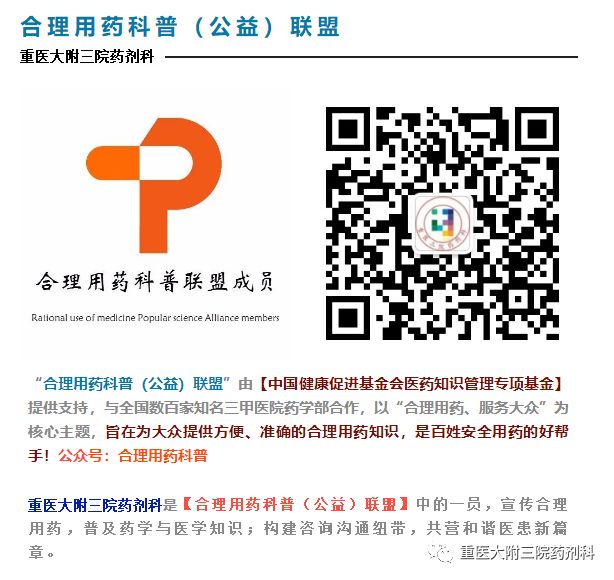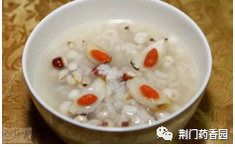
1. The Origin of Medicinal Cuisine

The “Book of the Later Han: Biographies of Virtuous Women” states: “Mothers prepare medicinal cuisine with deep affection.”
The “Huangdi Neijing” states: “Medicine is used to expel illness, while food is used to follow it. ‘The five grains nourish, the five fruits assist, the five livestock benefit, the five vegetables supplement, and when flavors combine, they nourish essence and qi.'”
During the Eastern Han Dynasty, the “Shennong Bencao Jing” recorded 365 medicinal substances, including jujube (大枣, Dazao), ginseng (人参, Renshen), goji berries (枸杞, Gouqi), schisandra (五味子, Wuweizi), rehmannia (地黄, Dihuang), coix seed (薏苡仁, Yiyiren), poria (茯苓, Fuling), adenophora (沙参, Shashen), ginger (生姜, Shengjiang), and scallion (葱白, Congbai), all of which are medicinal foods.
During the Sui and Tang Dynasties, Sun Simiao’s “Prescriptions Worth a Thousand Gold” included a special section on “Food Therapy,” which collected 164 medicinal foods. His disciple Meng Xian compiled the “Food Therapy Materia Medica,” the first monograph on food therapy in China.
During the Song and Yuan Dynasties, the “Principles of Food and Drink” compiled by the Yuan Dynasty physician Hu Sihui is the earliest nutritional monograph in China, containing 203 types of food.
During the Ming and Qing Dynasties, Li Shizhen compiled the “Compendium of Materia Medica,” which collected over 3,000 medicinal foods, including grains, vegetables, and fruits.
Statistics show that from the early Han to the late Ming, there were over 3,000 works related to medicinal cuisine, and its application is even more widespread today.
2. Characteristics of Medicinal Cuisine

Focus on the whole, with dialectical dietary application.
Prevention and treatment combined, with significant effects.
Delicious medicinal foods, easy to consume.
3. Classification of Medicinal Cuisine

Classified by efficacy:
1. Health-preserving medicinal cuisine 2. Medicinal cuisine for treating diseases or assisting treatment
Classified by processing characteristics:
1. Liquid foods 2. Semi-liquid foods 3. Solid foods
4. Applications of Medicinal Cuisine

Diet according to syndrome.
Diet according to individual.
Diet according to season.
Diet according to region.
5. Seasonal Applications of Medicinal Cuisine
Spring Medicinal Cuisine
Spring corresponds to wood and is associated with the liver.
In spring, it is advisable to nourish yang.
“Spring qi causes all diseases to manifest in the head.”
Spring is a time of growth, and the liver qi should be nourished.
In spring, it is advisable to consume more light vegetables and legumes.
Example of medicinal cuisine:
Lotus and Glutinous Rice Porridge
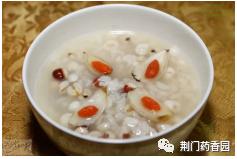
Ingredients and preparation: 90 grams of lotus, 100 grams of glutinous rice, appropriate amount of brown sugar, cook with water to make porridge. Consume once daily.
Effects and indications: Tonifies the middle, benefits qi, strengthens the spleen, nourishes the stomach, calms the spirit, can treat stomach pain, irritability, insomnia, etc.
Yam and Sugarcane Soup
Ingredients and preparation: 200 grams of fresh yam, mashed, add 200 grams of sugarcane juice, mix well, boil in a pot, cool slightly before consumption.
Effects and indications: Treats cough and asthma.
Scallion and Fermented Soybean Tofu Soup
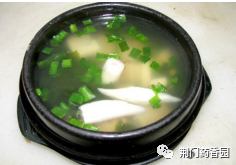
Ingredients and preparation: 2-4 pieces of tofu, 12 grams of fermented soybeans, 15 grams of scallion. Wash the fermented soybeans and scallion, crush the scallion. Place them in a pot, boil on high heat, then simmer for half an hour. Season to taste and serve.
Effects and indications: Expels wind-cold, aromatic and opens the orifices. Can treat colds due to wind-cold, symptoms include headache, nasal congestion, clear nasal discharge, sneezing, throat itching, cough, and aversion to wind-cold.
Summer Medicinal Cuisine
Summer corresponds to fire and is associated with the heart.
Summer is a time of growth, and it is advisable to nourish the heart.
In hot weather, it is advisable to supplement protein.
In summer, the principle of supplementation should focus on clearing, tonifying the spleen, and dispelling heat and dampness.
Example of medicinal cuisine:
Honeysuckle and Licorice Tea
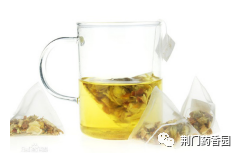
Ingredients and preparation: 6 grams of honeysuckle, 3 grams of green tea, 1 gram of licorice, 3 grams of white sugar, 0.3 grams of salt, brew with boiling water as a tea substitute.
Effects and indications: This tea has the effects of clearing heat and detoxifying, dispersing wind-heat. Used for mild heatstroke, throat discomfort, heat boils, and prickly heat.
Cooling Duck Soup
Ingredients and preparation: 1 old duck, 15 grams each of adenophora, yam, lotus seeds, jujube, and yuzhu, 12 grams of lotus, 10 grams of goji berries, 30 grams of coix, appropriate amount of salt and rock sugar. Slaughter the old duck, clean it, cut it into pieces, and put it in a pot with the herbs, rock sugar, and salt, add water, and simmer for 2-3 hours before serving.
Effects and indications: Old duck is good for nourishing yin and lowering fire. Paired with cooling and tonifying ingredients, it nourishes yin, moistens the lungs, strengthens the spleen, and dispels heat. Suitable for summer heat toxins, chronic cough due to lung dryness, and individuals with yin deficiency.
Mai Dong and Lu Gen Soup
Ingredients and preparation: Take 6 grams of mai dong and 9 grams of lu gen, decoct in water twice, filter; combine the filtered liquid and drink frequently.
Effects and indications: Clears heat, generates fluids, stops vomiting, relieves restlessness, moistens the lungs, clears the heart, and protects the throat. Used for excessive sweating in summer, dizziness, restlessness, and gastrointestinal disease prevention.
Autumn Medicinal Cuisine
Autumn corresponds to metal and is associated with the lungs.
In autumn, it is advisable to nourish yin.
Autumn is a time of harvest, and the lung qi should be nourished.
In autumn, it is advisable to increase water intake and consume more sour foods.
Autumn diet should focus on nourishing yin and moistening, avoiding spicy and dry foods.
Example of medicinal cuisine:
Yuzhu Braised Duck
Ingredients and preparation: 50 grams each of yuzhu and adenophora, 1 duck, appropriate amounts of scallion, ginger, monosodium glutamate, and fine salt. Slaughter the duck, remove feathers and internal organs, clean it, and place it in a pot. Add yuzhu and adenophora, and enough water. Boil on high heat, then simmer for over an hour until the duck meat is tender, then add seasonings.
Effects and indications: Nourishes the lungs and moistens dryness. Suitable for dry autumn weather, persistent cough, and constipation. Also beneficial for diabetes and chronic gastritis patients.
Fresh Lotus and Mung Bean Porridge
Ingredients and preparation: 30 grams of mung beans, 30 grams of glutinous rice, 50 grams of fresh lotus. Cook the mung beans until soft, then add the glutinous rice, cook until half done, then add fresh lotus slices and cook until done, sweeten with white sugar.
Effects and indications: Clears heat, cools the blood, relieves throat discomfort, generates fluids, and quenches thirst. Used for acute throat inflammation due to lung and stomach heat, and for post-inflammatory heat damaging yin.
Chrysanthemum Porridge
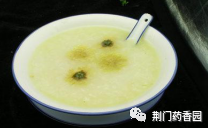
Ingredients and preparation: Take 60 grams of chrysanthemum, decoct to extract the liquid. Pour the filtered liquid into a pot, add 100 grams of washed glutinous rice, and enough water to cook into porridge.
Effects and indications: Disperses wind-heat, clears liver fire, brightens the eyes. Used for autumn wind-heat colds, irritability, throat dryness, and red, swollen eyes.
Winter Medicinal Cuisine
Winter corresponds to water and is associated with the kidneys.
Winter is a time of storage, and all things lie dormant, it is advisable to nourish the kidneys.
In winter, reasonable exercise is necessary to enhance the body’s resistance.
In winter, it is advisable to consume more warming and hot foods, especially those that tonify kidney yang, to improve the body’s cold resistance.
Example of medicinal cuisine:
Angelica and Astragalus Stewed Chicken
Ingredients and preparation: 1 chicken, 15 grams of angelica, 30 grams of astragalus, appropriate amounts of scallion, ginger, yellow wine, and fine salt. Slaughter the chicken, remove feathers and internal organs, clean it, and place angelica, astragalus, scallion, ginger, yellow wine, and fine salt into the chicken’s cavity. Then place it in a pot, add enough water, boil on high heat, then simmer until the chicken is cooked.
Effects and indications: Tonifies qi and blood, nourishes yin and promotes essence. Suitable for patients with deficiency of both qi and blood.
Yam and Lamb Soup
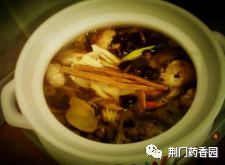
Ingredients and preparation: 500 grams of lamb, 50 grams of yam, appropriate amounts of ginger, scallion, pepper, cooking wine, and salt. Slice the lamb, peel and slice the yam, wash and crush the ginger, and wash the scallion. In a pot, add water, put in the lamb slices, and boil with ginger, then remove the lamb slices. Put the yam and lamb slices back in the pot, add enough water, along with ginger, scallion, pepper, and cooking wine, boil on high heat, then skim off the foam, and simmer until tender.
Effects and indications: Aids the original yang, replenishes essence and blood, tonifies the middle and benefits qi, strengthens the spleen and stomach, and nourishes the liver and kidneys. A classic winter nourishing medicinal cuisine, suitable for patients with yang deficiency.
What are you waiting for?
Take action now!
❖
